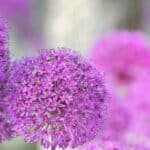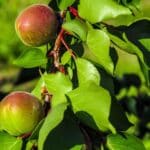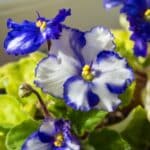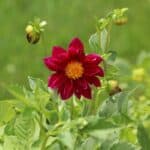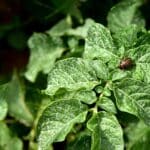Japanese painted fern (Athyrium niponicum), also known as lady fern, ghost fern, or Japanese lady fern, is a very charming plant to include in your garden bed.
This gorgeous deciduous fern will add lots of color and texture to your garden bed because it produces triangular-shaped scalloped leaves in colors like gray-green with hints of burgundy.
This specimen plant is great for adding lots of color to your garden, and it will look beautiful if you pair it with plant species that will complement the unique burgundy foliage of this fern.
In this guide, we will look at some of the best companion plants to include in your painted fern garden bed.
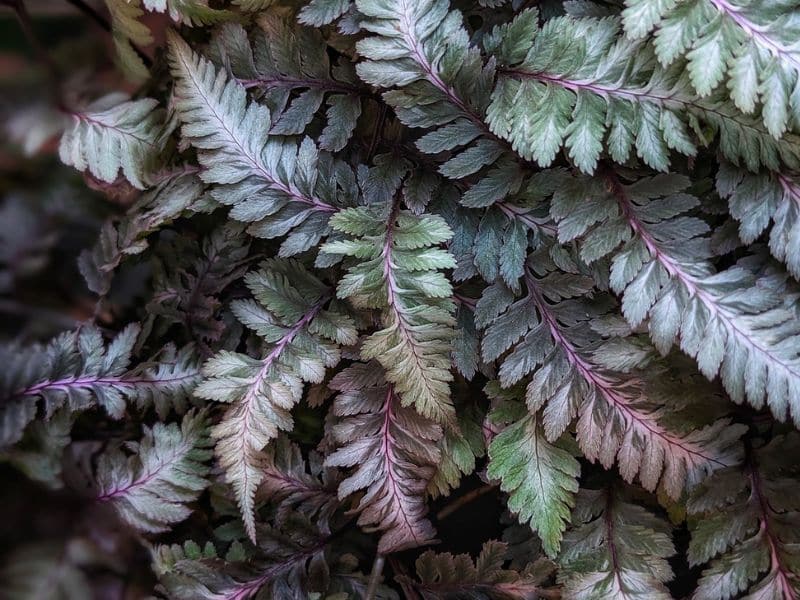
What to Plant with Japanese Painted Ferns
Painted ferns grow very well in moist soil that drains well. These plants are sensitive to heat and direct sunlight and, as such, should be planted in partial shade or even deep shade, especially if it is grown in particularly hot regions.
The deer-resistant fern will thrive in these low-light settings, but it must be paired with other shadow-loving plants since it will die if grown in direct sunlight, and sun-loving plants will not develop well in the shade.
Here is a quick look at the best plants to pair with lady ferns in a shade garden.
Coral Bells

Coral bells (Heuchera) are a perfect companion for your Japanese painted ferns because of their unique foliage color. Heuchera leaves can be green, blue, yellow, peach, copper, purple, deep burgundy, or pinkish red.
These perennials also produce attractive flowers on tall spikes from late spring to summer, adding interest to your garden.
The vivid foliage of coral bells will look striking next to lady ferns or any plain green ferns.
These shrubs are great ground covers and are often used as border plants and garden fillers. They will grow very well in partial shade but should be established in well-drained soil that is kept moist.
Heucheras can be planted next to your lady fern plants because they have similar heights and will complement one another with their exciting colors and unique foliage.
Begonias

Begonias (genus Begonia) are excellent companion plants for painted fern plants because they add lots of color to your garden bed.
These perennials produce colorful flowers in just about any shade known to man (depending on variety). Varieties like strawberry or rex begonia are good options for focusing on a foliage garden instead of flowers because these species have attractive leaf colors.
Begonias grow very well in the same shade garden as painted fern plants. They will also flourish in the same moist but free-draining soil painted fern species love so much.
Many begonia species can vary significantly in flower, color, and height. When pairing these plants with painted ferns, carefully position shorter begonia species in the front and establish the taller species behind your ferns.
Lady’s Mantle

Lady’s mantle (Alchemilla) is a perennial plant that can look rather interesting next to the silvery fronds of Japanese painted ferns. These companion plants produce thick foliage clumps and froth-like yellow flowers, adding great texture to your garden bed from late spring to early summer.
This plant species will grow well in a semi-shade area with morning sun. The bushy plant should be established in free-draining soil and needs regular watering.
This flowering plant can grow up to 2 feet tall and can 3 feet wide. As such, it is best to establish it behind your ferns. The other ferns in front help hide the fading leaves of this wildflower, so the planting area will still look nice even as it dies back for the winter.
Read more: Lady’s Mantle Companion Plants
Hosta
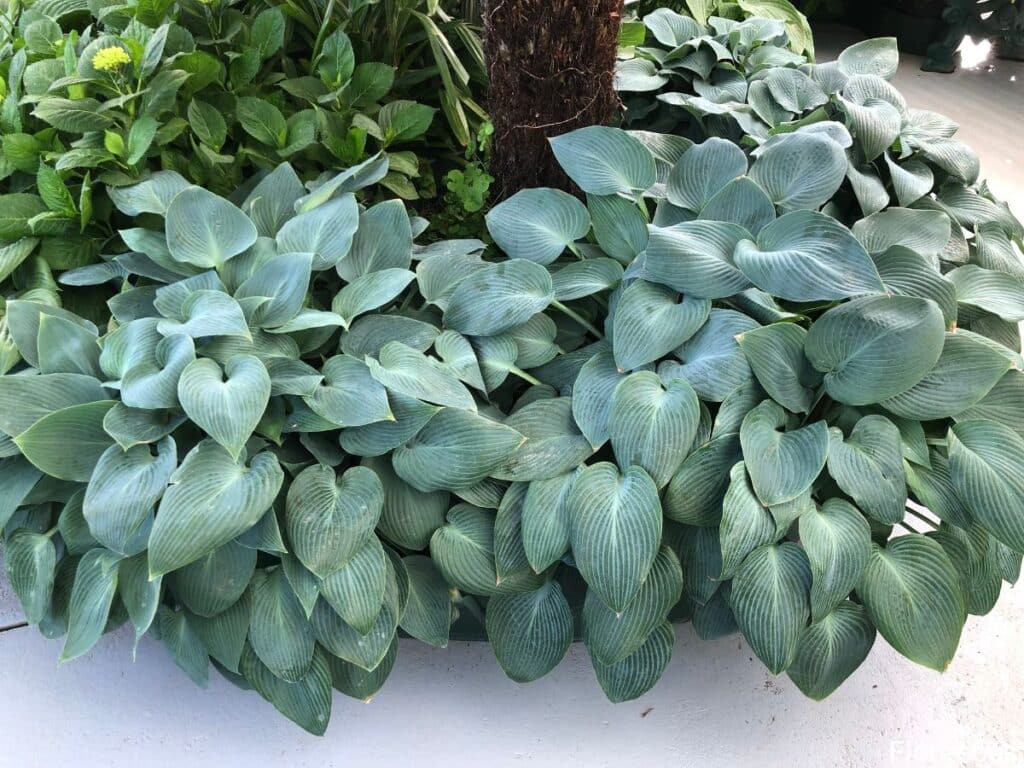
Hostas (Hosta), also known as the plantain lily, is also a great companion for a Japanese-painted fern. Hostas are known for their vivid growth and lush green leaves. Flower color, leaf shape, leaf design, and the color of the leaves can all vary greatly amongst hosta species. Some are a deep shade of green, while others might feature light-tinted leaves with white markings around the edges of the leaf.
Hostas grow well in semi to full shade and consistently moist soil. They are very functional as garden fillers, border plants, or ground covers that will supply your ferns with lots of organic matter.
It can be challenging to spot a short fern if it is positioned behind the vigorous leaves of your hostas. As such, it is best to place your slow-growing ghost fern in the front so its colorful leaves can form a striking contrast next to the vibrant green leaves of hostas.
What NOT to Plant with Japanese Painted Ferns
Japanese-painted fern plants won’t grow well in certain conditions or next to certain plant species.
It is best not to grow them next to drought-tolerant plant species like lavender, sage, coneflowers, or black-eyed susans because the ferns will wilt and die in dry soil. Any plants that do not enjoy regular wetness may develop root rot or powdery mildew if grown in the shaded, damp environment that these ferns demand.
Painted fern plants are slow growers. Because of their slow growth, they can be quickly overwhelmed and deprived of nutrients and light if cultivated among fast-growing plant species as boxwoods, hydrangeas, or rhododendrons. If you place them next to a fast-growing species, you should keep an eye on your garden and trim the fast growers to keep them from smothering your beautiful fern.
Final Thoughts
The Japanese painted fern is an excellent plant to add to your garden since it complements a wide range of plants, including begonias, hostas, ladys’ mantles, and coral bells.
We hope that this advice has helped you choose acceptable partners for your garden bed or containers so that you may create a lovely and colorful garden.
See more:
Image by HanjoHellmann/depositphotos


